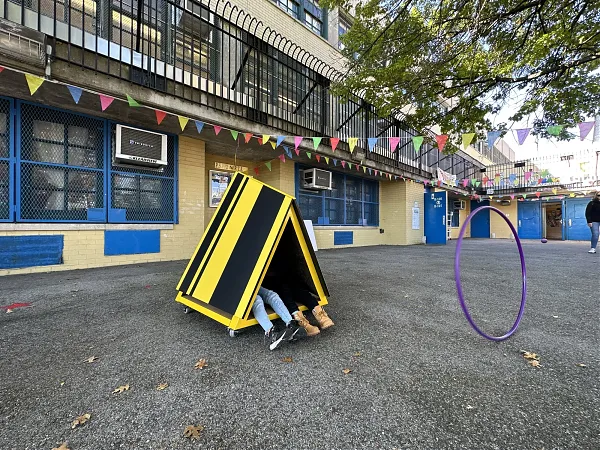How to Build a Neurodiverse City

Students play in soundscape pods designed by Interboro Partners.
The sounds of highway car traffic grate on most people trying to focus. But that’s particularly true for some of the students of PS112m in New York City.
“This is a school that serves students with special needs, and many of them have sensory sensitivities,” says Georgeen Theodore, founder of multidisciplinary design firm Interboro Partners. “Their playground is directly adjacent to the FDR [Drive], which is a major source of noise,” as a multi-lane highway that hugs the East River along Manhattan’s edge.
The school hosts one of NYC Public Schools’ Nest Programs, in partnership with New York University, to serve students with autism spectrum disorders in classrooms alongside general education students.
Cities and schools are not typically designed by, or for, people with conditions such as autism. Often, the processes for how they get built exclude input from neurodivergent residents, a category that can include people with attention deficit hyperactivity disorder, dyspraxia, dyslexia and intellectual disabilities as well as mental health conditions like anxiety, depression, and PTSD.
Architects are developing ways to address these oversights — first experimenting with new ways of surveying diverse users, then designing with the insights they receive.
On X
Follow @LangeAlexandraOn Instagram
Featured articles
CityLab
New York Times
New Angle: Voice
Getting Curious with Jonathan Van Ness